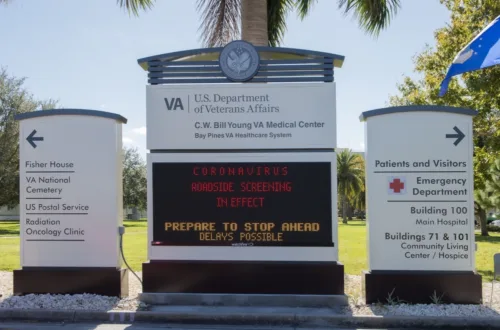VA Launches New Gulf War Illness Study

In late April 2023, the Department of Veterans Affairs announced a partnership with the National Institutes of Health (NIH) to learn more about Gulf War Illness which plagues roughly a third of those deployed in Operations Desert Shield and Desert Storm.
The study is meant to learn more about how to diagnose and treat Gulf War Illness, a condition the VA had earlier rejected as being service-connected and viewed as being possibly stress-related.
Why Now?
In the summer of 2022, legislation known as the PACT Act was passed, offering new options to those who suffer from service-connected issues related to toxic exposures.
Those who suffer from Gulf War Illness benefit from PACT Act laws requiring the VA to view symptoms related to Gulf War Illness as service-related without forcing the veteran to prove a service connection.
Veterans previously denied VA compensation for medical issues related to Gulf War Illness have a second chance to have those claims reviewed under the new rules. The attention the PACT Act has given to this set of medical issues is likely forcing some to reconsider it going forward.
Related: TRICARE Guide
A History of Gulf War Illness
A Military.com article on the issue notes, “Up to 210,000 of the 700,000 veterans who deployed to the 1990-91 Persian Gulf War later developed symptoms such as persistent fatigue, chronic headaches and pain, memory loss, skin conditions and mood disturbances” later described as “Gulf War Syndrome” and later reclassified as Gulf War Illness.
- As mentioned above, those who served from 1990 to 1991 in the Persian Gulf have sought answers to the medical questions they brought home with them.
- The Department of Veterans Affairs is reported to have initially labeled these medical issues as “psychosomatic,” meaning these troops experienced symptoms that weren’t physical maladies but perceived ones.
- The Military.com article referenced above includes a scathing indictment of this unfortunate period of VA history, noting the agency “invested heavily into research examining stress as a possible cause while denying benefits to those with a complex array of symptoms.”
As late as 2014, the agency was dancing around basics such as the name of the illness. It was referred to as a “chronic multi-symptom” problem, a label that to some seemed intentionally vague to avoid implying a link to military service.
In 2017, a Government Accountability Office report noted that only about 20% (likely less) of all Gulf War Illness claims were approved.
In 2022, a study by the University of Texas indicated a possible link between the bombings of chemical weapons plants in Iraq, the release of the toxin sarin, and Gulf War Illness.
Related: VA Compensation for PTSD
What’s Happening Now?
The VA and NIH partnership to research Gulf War Illness includes a call for up to 75 volunteers to participate in the study. They require up to 50 participants who served during the Persian Gulf Wars and have Gulf War Illness symptoms including:
- Chronic fatigue
- Muscle pain
- Joint pain
- Gastrointestinal problems
- Memory loss or impairment
The study also requires up to 25 volunteers who served in the same areas simultaneously but with no symptoms of Gulf War Illness. The study is hoped to lead to a better understanding of the condition and the development of better treatment and testing.
Until now, VA officials describe finding the right treatments for Gulf War Illness as being “elusive” and focused primarily on dealing with symptoms rather than curing or easing the condition itself.
The partnership between the VA and NIH does not include research on the origins of Gulf War Illness but focuses on treating it.
Related: TRICARE Prime Vs. TRICARE Select
About the author
Editor-in-Chief Joe Wallace is a 13-year veteran of the United States Air Force and a former reporter/editor for Air Force Television News and the Pentagon Channel. His freelance work includes contract work for Motorola, VALoans.com, and Credit Karma. He is co-founder of Dim Art House in Springfield, Illinois, and spends his non-writing time as an abstract painter, independent publisher, and occasional filmmaker.


